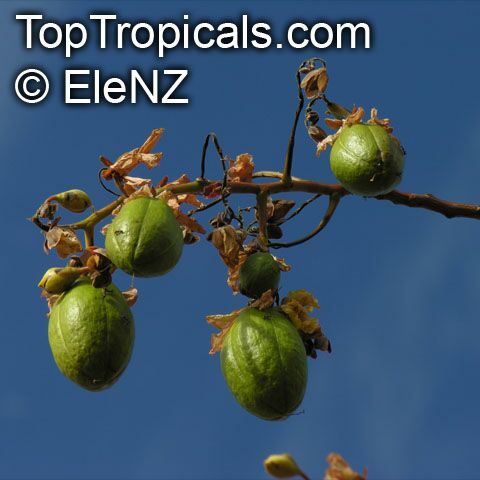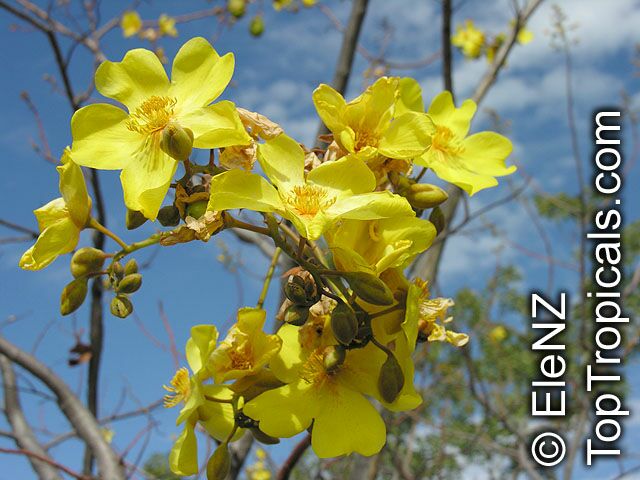Cochlospermum fraseri (Kapok)
Top Tropicals Plant Encyclopedia
Botanical name: Cochlospermum fraseri
Common name: Kapok
Family: Cochlospermaceae
Origin: Australia







Cochlospermum fraseri, commonly known as Kapok, is a deciduous small tree species native to Australia. It typically stands between 10 - 20 ft. tall and has a moderately sparse canopy. This plant is a great addition to any garden and a must have for those who are interested in ethnomedical plants as it has a long-standing tradition of being used for medicinal purposes.
Kapok is a very low maintenance plant that prefers full sun and moderate amounts of water. Its foliage is made up of clustered, alternate, mid-green to yellow, bi- or tri-pinnate leaves. Offset against this are the large, waxy, five-petalled yellow orange flowers that open in late summer. Once pollinated the flowers give rise to large globular green papery fruit which eventually turn to brown and split along the seams to release their seed. These small black seeds are protected by dense mats of fine silky hairs.
Kapok is an attractive small tree that not only adds vibrant color to gardens, but also attracts butterflies and hummingbirds. In order to thrive, it requires well-drained soil and should be grown in USDA zone 9-11. In areas with cooler temperatures its growth is slowed down, thus making container gardening a great option. In cold regions it should be planted in a frost-free area before winter and protected with a suitable mulch when temperatures drop. During the active growing season the soil should remain moist; however in winter the Kapok tree should not be over-watered, as standing water can cause root rot and cause death of the plant.
This specie of tree has long been used for medicinal purposes and is also understood to have certain antioxidant and anti-inflammatory properties. Kapok is a versatile plant that can be planted for its ornamental value and its medicinal properties. As such, it is a great addition to any garden.
Similar plants: Cochlospermum fraseri (Kapok)
Nothing found




